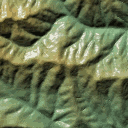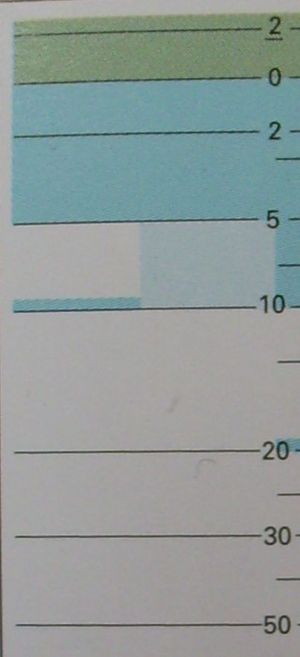Bathymetry
As on land there are hills and valleys on the seabed too. Bathymetry [1]is the study of underwater depth of lake or ocean floors.
The shape of the seabed has a great influence on currents and therefore on the climate, the flora and fauna, the occurence of natural resources, the tides, tsunamis and of course on a ships safety at sea. Along the edges of tectonic plates huge trenches and ridges are formed.
It would be very interesting to display detailed bathymetry data on a free nautical map (e.g. OpenSeaMap.org). While for the deep sea a rather coarse resolution is sufficient, it is vital to have very detailed data for the shallow coastal waters.
- For shoals see:Water Depth.
First steps
- Maps of dry land
Map Link Equidistance Shading [2] opencyclemap.org 10 m [3] topo.geofabrik.de 10 m ja [4] openpistemap.org 10 m Slowakische Karte freemap.sk 20 m ja
- Nautical Chart
Seekarte OpenSeaMap.org not jet...
- Tobias Wendorff is computing a depth data model and rendering
- Christoph Eckert computed the whole world in 1° tiles
- A student of Frederik Ramm did something too.
- Alexander Zipf computes Europe
in the OSM-Wiki
- Contours of the Cyclemap
- Relief-maps
- HikingBikingMaps
- Lowest Astronomical Tide (LAT) - as a base for water depths in costal waters
Tools
- srtm2osm
- Srtm2Osm: automatically downloads the data and converts it to OSM file format. One requests data within a bounding box , the resolution of the resulting data and it outputs an OSM file. This tool directly downloads SRTM3 V2 data. Caveats: Doesn't work with a proxy, the original data has enormeous artefacts within the bigger mountains, and it doesn't work with very large areas.
Links
- SRTM all about SRTM data and the data itself
- Cleantopo2, edited SRTM30_plus data (land and sea data), public domain, full resolution, 16-bit tiff files, resolution 10.800 x 5.400 px.
- NDGC: Coastal data for the US, Pacific and atlantic coast, Gulf of Mexico, public domain
- CIGAR: SRTM to fill the gaps, according to Frederik Ramm not CC-BY-SA-compatible
Rendering
| Zone | Relief-Farbe |
|---|---|
| 0-1000 | |
| 1000-2000 | |
| 2000-3000 | |
| 3000-4000 | |
| 4000-5000 | |
| 5000-6000 | |
| 6000-7000 | |
| 7000-8000 | |
| 8000-9000 |
| Zoom | Äquidistanz | Weltmeere | Küste | nahe Küste |
|---|---|---|---|---|
| Zoom 3 | 1000 m | Relief | ||
| Zoom 4 | 1000 m | Relief | ||
| Zoom 5 | 1000 m | Relief | ||
| Zoom 6 | 1000 m | Relief | ||
| Zoom 7 | 1000 m | Relief | 200-m-zone colored | |
| Zoom 8 | 1000 m | Relief | 200-m-zone colored | |
| Zoom 9 | 500 m | 200-m-zone colored | ||
| Zoom 10 | 500 m | 200-m-zone colored | 20-m-zone | |
| Zoom 11 | 100 m | 200-m-zone colored | 20-m-zone | |
| Zoom 12 | 100 m | 20-m-zone | ||
| ab Zoom 13 | 50 m | 20-m-Line, 5-m-zone, 2-m-Linie |
All this has to be adapted to the certain areas of interest. In the Mediterranean, with a depth of about 4000 meters, the rendering has to be different from, say, the Baltic Sea with an average depth of 50 meters.
Details have to be shown in coastal waters at zomlevel 12 and above.
Bigger lakes should have depth lines too, at zoomlevel 13 or above.
For sailors, Fischermen and Divers
maximum detail in coastal waters where it is most interesting for sailors, fischermen and divers:
| Tiefe | Darstellung |
|---|---|
| 2 m | line |
| 5 m | zone colored blue |
| 10 m | line |
| 20 m | line |
| 50 m | line |
| 100 m | line |

